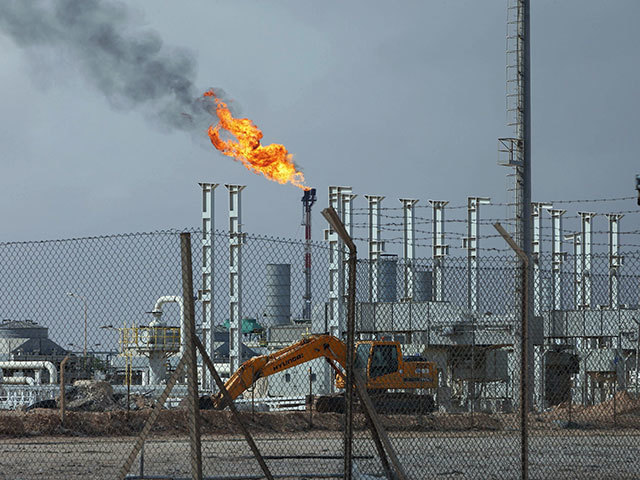
Libya’s warring factions have pledged to keep the North African country’s crude flowing, putting pressure on other OPEC nations to curb output when the group supplying 40% of the world’s oil meets next month.
Libya’s production has risen even as violence and political disputes have left the country under the rule of two competing administrations: the internationally recognized government of Abdulla al-Theni and the Islamist-led cabinet of Omar al-Hassi. Both authorities are seeking to keep oil output stable as various militias battle for influence.
“It is almost beyond me that the Libyans managed to maintain production, considering that there is no government, and with all these militias,” Ole Hansen, head of commodity strategy at Saxo Bank A/S, said in an interview Oct. 20 in Dubai.
“It is almost a miracle that they managed to get back production to where they have managed to get it back to.”
Libya, holder of Africa’s largest crude reserves, is producing 800,000 barrels a day, compared with 215,000 barrels a day in April when oil ports were shut by rebels seeking self- rule in the eastern region, according to state-run National Oil Corp. An agreement with the rebels allowed output to increase while the fighting between Islamist and pro-government militias has been contained to non-oil-producing areas in and around the capital Tripoli and Benghazi, the country’s second-biggest city.
Brent crude, a benchmark for more than half of the world’s oil, has tumbled 25% since June and rose 4 cents to $86.26 a barrel on the London-based ICE Futures Europe exchange at 12:42 p.m. Singapore time. Banks including BNP Paribas SA and Bank of America Corp. predict the rout may be over. They’re counting in part on the Organization of Petroleum Exporting Countries to reduce supply as the US pumps the most oil in almost three decades and Russia’s output approaches a post- Soviet record.
Libya called for OPEC to reduce its collective output as rising global production pushed down crude prices, Mohamed Elharari, spokesman for National Oil, said Oct. 17. Saudi Arabia, the world’s biggest exporter, and other large producers in the group haven’t signaled that they will push for a cut at a planned meeting Nov. 27 in Vienna.
“Every incremental barrel from Libya expands the supplies of already surplus levels of light sweet crude in the market,” Miswin Mahesh, a commodities analyst at Barclays Plc, said in an e-mail yesterday.
“The call on OPEC crude and stocks for the fourth quarter this year is at 29.8 million barrels a day while their latest production numbers are 30.66 million barrels a day so, yes, the surplus is already quite a lot, and warrants an adjustment.”
The Islamist government published a statement on National Oil’s website on Oct. 20 calling on workers to maintain oil output at the maximum level and not to hold protests at oil sites to preserve the country’s income amid declining prices.
“We are keen to provide security to all citizens and all companies operating in Libya,” said Mashallah al-Zawi, the oil minister in Hassi’s Islamist-led National Salvation Government, at a conference last week in Istanbul, according to comments published by local websites including Akhbar Libya. Theni’s government moved to the eastern region as Islamist militias expanded their control in the capital Tripoli.
Most of Libya’s oil fields and export terminals for crude are hundreds of miles away from the conflict. The so-called Executive Office for the Barqa region, which seeks self-rule for eastern Libya, pledged to work with Theni’s government to defend oil facilities and keep crude flowing to international markets, a Barqa spokesman, Ali Al-Hasy, said Sept. 3.
Concerns about future disruptions persist as violence seems to be spreading, Riccardo Fabiani, a North Africa analyst based in London at Eurasia Group, a political risk research and consulting firm, said in an e-mail Oct. 20. “Inevitably at some point an incident will affect some oil facility,” he said.
Libya’s security situation “is getting increasingly out of control,” Saxo Bank’s Hansen said. “If Libya suddenly falls off the cliff, that’s another 400,000 or 500,000 barrels a day” of crude lost for global markets, he said.
The OPEC member’s current output is half what it was before the 2011 rebellion that ended Muammar Qaddafi’s 42-year rule. Political schisms and violence have intensified amid a lack of central authority since his ouster and the chaos has undercut efforts to restore production to pre-2011 levels.
The two national institutions running the country’s oil industry, National Oil and the central bank, have avoided taking sides. “We are doing our work in a professional manner,” National Oil spokesman Mohamed Elharari said Oct. 20 by phone in Tripoli. “We don’t want any political interference.”
Libya’s House of Representatives was to discuss transferring the Central Bank of Libya’s work to a safe location amid the nation’s hazardous security, Issa Al-Oraibi, a House member, said by phone on Oct. 11.
“Apparently all the oil revenues in Libya are deposited at the central bank’s offshore branch, so the only money that comes into the country is strictly to pay salaries and keep the country going,” Hansen said. “So no one is being able to get their fat claws on the billions there.”
Recommended for you
